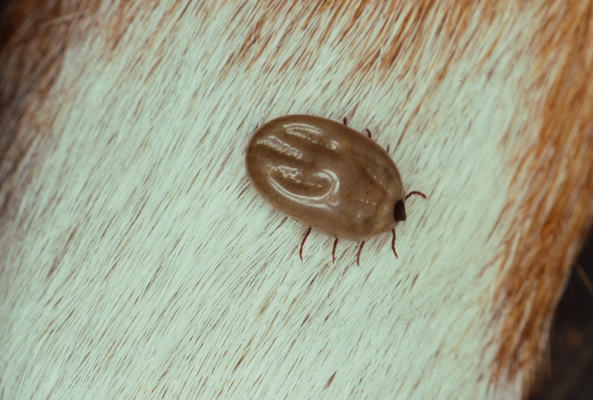
By Alana Mitchelson
PET owners have faced a new health threat this spring, with the “deadly” eastern paralysis tick finding its way to Melbourne for the first time, as parts of Cardinia Shire have been identified as southern paralysis “tick hot spots“.
Led by parasitologist Dr Stephen Barker, the NexGard Tick Mapping 2016 identified 14 cases of eastern tick paralysis – 10 dogs, three cats and one person – including two fatal incidents.
“Normally present along the East Coast of Australia, the Ixodes holocyclus – more commonly referred to as the eastern paralysis tick – has been reported at 32 postcodes across Greater Melbourne this year,“ Dr Barker said.
“It appears to be more toxic and life-threatening than the familiar southern paralysis tick, Ixodes cornuatus.
“It seems that eastern paralysis ticks are travelling around wider Melbourne by either hitching a ride on pets from areas where the tick is endemic, or through hitching a ride on people who visit Melbourne from areas where the tick is endemic.”
Pakenham and Emerald have been recognised as hot spots this year for southern paralysis tick infestation, with five reported cases in Pakenham and three reports in Emerald.
The region’s closest after-hours clinic Animal Emergency Centre, based in Hallam, has seen eight cases of tick paralysis this year.
Dr Yenny Indrawirawan said six of these incidents had occurred in areas with a history of tick cases, including Mallacoota, Gippsland, Sale and Wilsons Promontory.
But two uncommon cases were identified outside of the ’tick area’ in Wandin and Nar Nar Goon.
It was found that there had been a recent delivery of cattle from a “known tick area“ to the Nar Nar Goon property where a pet was found to have come in contact with paralysis ticks.
“Most cases have travelled or have been associated with travel to and from known tick areas,“ Dr Indrawirawan said.
“For example, there was a case where a dog had been taken for a walk in a Wandin reserve. This dog might have had contact with an animal during its walk that had travelled to a tick area.”
She said the study was the first to systematically document eastern paralysis ticks in the area and demonstrates proof that eastern paralysis ticks are travelling to central and outer Melbourne by hitching a ride on pets from areas where the tick is endemic.
The tick mapping study has warned pet owners to be particularly vigilant this tick season; September through to April.
Pet owners have been advised to watch for the common clinical signs of tick paralysis including vomiting, loss of appetite, lethargy, altered pupil size, changes in breathing sound or pattern, an altered ability to move (particularly with the back legs), a change in gum colour, a change or loss of voice, coughing and inability to blink one or both eyes.
If these signs are detected, it is vital that the pet owner seeks immediate veterinary attention, minimises stress to the animal and removes any ticks that are found as quickly as possible but kept for identification purposes.






